Designing a small backyard garden can be a rewarding endeavor, allowing you to create a lush and inviting outdoor space even with limited square footage. The key lies in innovative design tips that maximize the potential of your compact space, turning it into a vibrant and functional garden. By focusing on creative planting strategies, efficient use of space, and clever features, you can achieve a garden that is both beautiful and practical. In this article, we’ll explore a variety of design ideas tailored for small backyard gardens, helping you transform your limited area into a stunning green retreat.
Exploring the Charm of Small Backyard Gardens
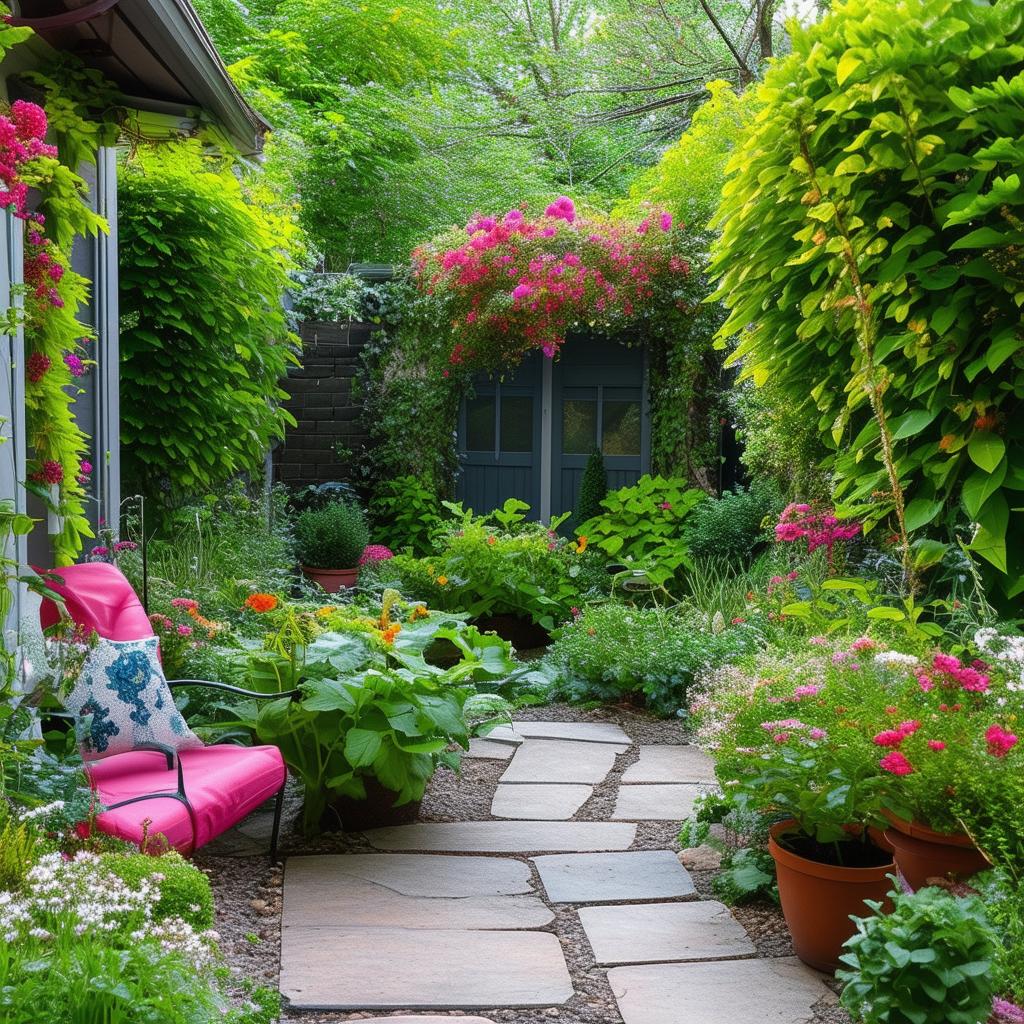
Small backyard gardens have an undeniable charm, offering a perfect canvas for creativity and personal expression. In these compact spaces, every inch counts, prompting gardeners to think outside the traditional confines of a garden layout. Vertical gardening has become a favored method, utilizing walls, trellises, and hanging planters to cultivate a vibrant array of flowers, herbs, and vegetables. Pairing this technique with layered planting creates depth, making the garden feel larger and more inviting. Incorporating paths and stepping stones can guide visitors through the lush landscape while adding structure and visual interest.
To maximize the appeal of smaller gardens, consider integrating multi-functional elements that serve both aesthetic and practical purposes. For example, a bench can act as seating while offering storage for tools beneath the seat. Similarly, combining edible plants with ornamental flavors can enhance the beauty and utility of your garden simultaneously. Below is a simple table showcasing plants ideal for small gardens, categorized by their functional roles:
| Function | Plant Examples |
|---|---|
| Ornamental | Lavender, Hostas, Coleus |
| Edible | Chives, Strawberries, Radishes |
| Fragrant | Mint, Jasmine, Scented Geranium |
Understanding the Importance of Space Efficiency

In a world where urbanization continues to rise, the need for effective space utilization has never been more critical. Small backyard gardens present unique challenges and opportunities; to create visually appealing and productive green spaces, one must embrace innovative design principles. By prioritizing space efficiency, you can maximize the potential of your garden, ensuring that every square foot serves a purpose. Key strategies include:
- Layering Plants: Use vertical gardening techniques to layer plants, allowing for a rich variety of heights and textures.
- Multipurpose Furniture: Incorporate seating or storage that serves dual functions, minimizing clutter while providing convenience.
- Interplanting: Pair compatible plants to optimize growth and yield, creating a vibrant ecosystem in limited space.
Additionally, understanding how to design your garden layout can significantly enhance its efficiency. Consider utilizing a grid system to visually break down the space, making it simpler to plan planting schemes and pathways. To facilitate this, here’s a simple table showcasing different layout options and their benefits:
| Layout Style | Benefits |
|---|---|
| Raised Beds | Improves drainage and soil quality, plus makes plant care easier. |
| Container Gardening | Flexibility to rearrange plants; ideal for dynamic layouts. |
| Vertical Gardens | Maximizes wall space, allows for creative displays, and enhances airflow. |
Choosing the Right Plants for a Small Backyard
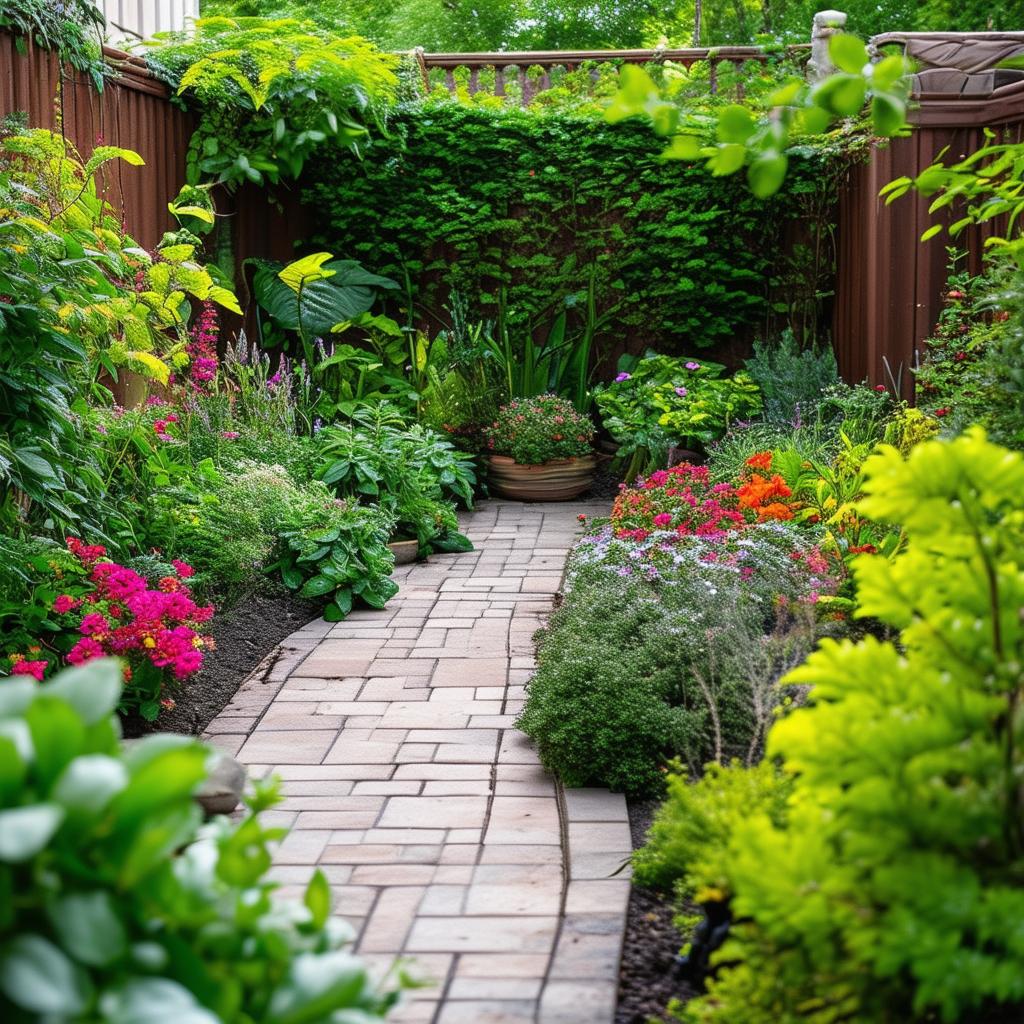
When selecting plants for a modestly sized garden, it’s essential to consider both aesthetics and functionality. Vertical gardening is a popular technique that can help maximize your space, allowing you to include a diverse array of plants, even in tight spots. Look for species such as:
- Climbing Roses – Perfect for trellises, adding beauty and fragrance.
- Bean Vines - Not only decorative but also productive, providing fresh vegetables.
- Hanging Baskets – Ideal for trailing plants like Petunias or Ferns, adding a lush feel.
Another strategy is to choose container plants, which come in various sizes and can be arranged creatively to enhance your yard’s layout. Opting for compact varieties ensures that you won’t overwhelm the area while still enjoying vivid colors and textures. Consider using:
- Dwarf Fruit Trees – Growing apples or citrus in pots can yield delicious fruits!
- Succulents – Low-maintenance and perfect for small spaces due to their minimal requirements.
- Herbs – Such as basil, parsley, or mint, which thrive in containers and provide culinary delights.
| Plant Type | Space Requirement | Ideal For |
|---|---|---|
| Climbing Plants | Vertical space | Walls, fences |
| Dwarf Varieties | 1-3 feet | Containers |
| Herbs | 1-2 feet | Kitchen garden |
Vertical Gardening: Turning Walls into Green Spaces
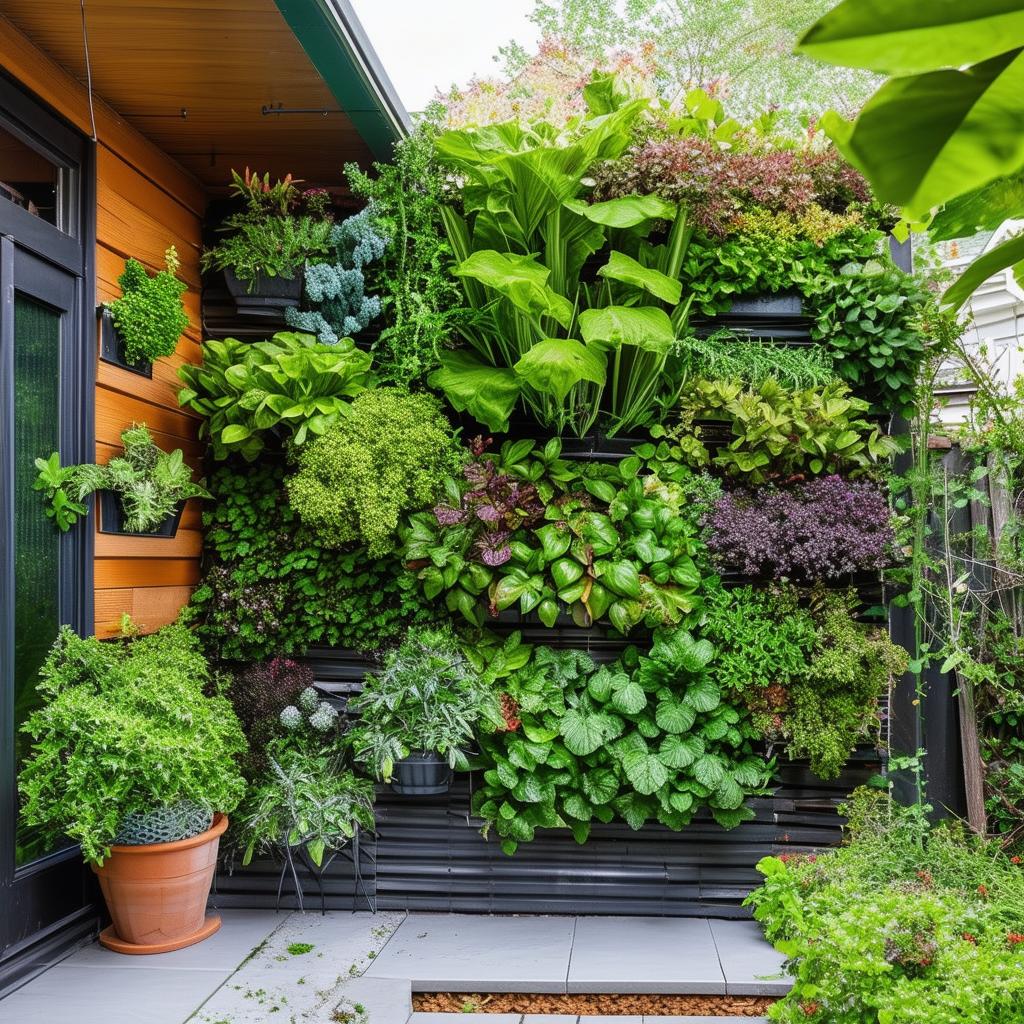
Imagine transforming blank walls into lush vertical gardens that breathe life into your outdoor space. By utilizing the often-overlooked vertical dimension, you can create stunning green displays that not only enhance the aesthetic appeal of your garden but also optimize your available space. Green walls can be achieved through various methods, from simple pocket planters to elaborate trellis systems. Consider integrating climbing plants like morning glories or hops to add height and color, while herbs such as thyme and oregano can be tucked into wall-mounted containers for practicality and charm.
To effortlessly manage the maintenance and layout of your vertical garden, think about employing a few crucial elements:
- Modular Planters: Use modular planter boxes that can be rearranged to suit your garden’s evolving style.
- Drip Irrigation: Consider installing a simple drip irrigation system to ensure your plants receive adequate hydration while minimizing the hassle.
- Flowering Vines: Select a mix of flowering vines and foliage for visual interest and to support biodiversity.
This variety not only adds dimension to your garden but can also encourage beneficial insects to thrive. To make informed decisions on which plants to incorporate, take note of their sunlight and water requirements in the following handy table:
| Plant Type | Sunlight Needs | Water Requirements |
|---|---|---|
| Morning Glory | Full Sun | Moderate |
| Thyme | Full Sun | Low |
| Hops | Full Sun | Moderate |
| Oregano | Full Sun | Low |
Layering Plants for Depth and Texture in Small Backyards

Transforming a small backyard into a lush oasis begins with the artful arrangement of plants, where layering becomes essential. By strategically combining varying heights and textures, you can create a stunning visual experience that draws the eye throughout the space. Consider incorporating tall plants, such as ornamental grasses or flowering shrubs, at the back or center of garden beds, while medium-sized perennials, like daylilies or coneflowers, provide a transitional layer. Lastly, shorter plants—think ground covers or low-growing herbs—can fill in the front, ensuring that every level is utilized efficiently without overwhelming the area.
In addition to height, pay attention to the foliage texture and color to further enrich your garden. A harmonious mix of smooth, fuzzy, and spiky leaves can add depth and intrigue. For instance, pairing vibrant, large-leaved plants like hostas with fine, wispy grasses will create a captivating contrast that invites exploration. Additionally, consider incorporating a color palette that complements your yard’s overall aesthetic. Here’s a quick reference of plants you might incorporate into your layered design:
| Height | Plant Type | Texture |
|---|---|---|
| Tall | Ornamental Grass | Fluffy |
| Medium | Daylily | Smooth |
| Short | Thyme | Fuzzy |
Incorporating Edible Gardens into Small Backyard Designs

Designing a small backyard doesn’t mean sacrificing your love for gardening. By integrating edible gardens into compact spaces, you can create a beautiful and productive oasis right outside your door. Vertical gardening is one of the most effective techniques; using trellises and wall planters allows you to grow climbing plants like tomatoes and cucumbers, saving precious ground space. Additionally, consider incorporating raised beds or container gardens, which not only maximize planting areas but also offer mobility and ease of maintenance. You can even arrange herb spirals or tiered planters to combine aesthetics with functionality.
Another exciting option is the use of edible landscaping. Mixing traditional landscaping with functional plants can yield striking results. For example, ornamental grasses alongside berry bushes can create a lush backdrop while providing delicious fruit. When planning your layout, remember to consider factors such as sunlight, accessibility, and the growth patterns of your chosen plants. A table showcasing vegetables and their compatible neighbors can guide your selections:
| Vegetable | Companion Plant |
|---|---|
| Tomato | Basil |
| Carrot | Onion |
| Lettuce | Radish |
Utilizing Container Gardening for Maximum Flexibility
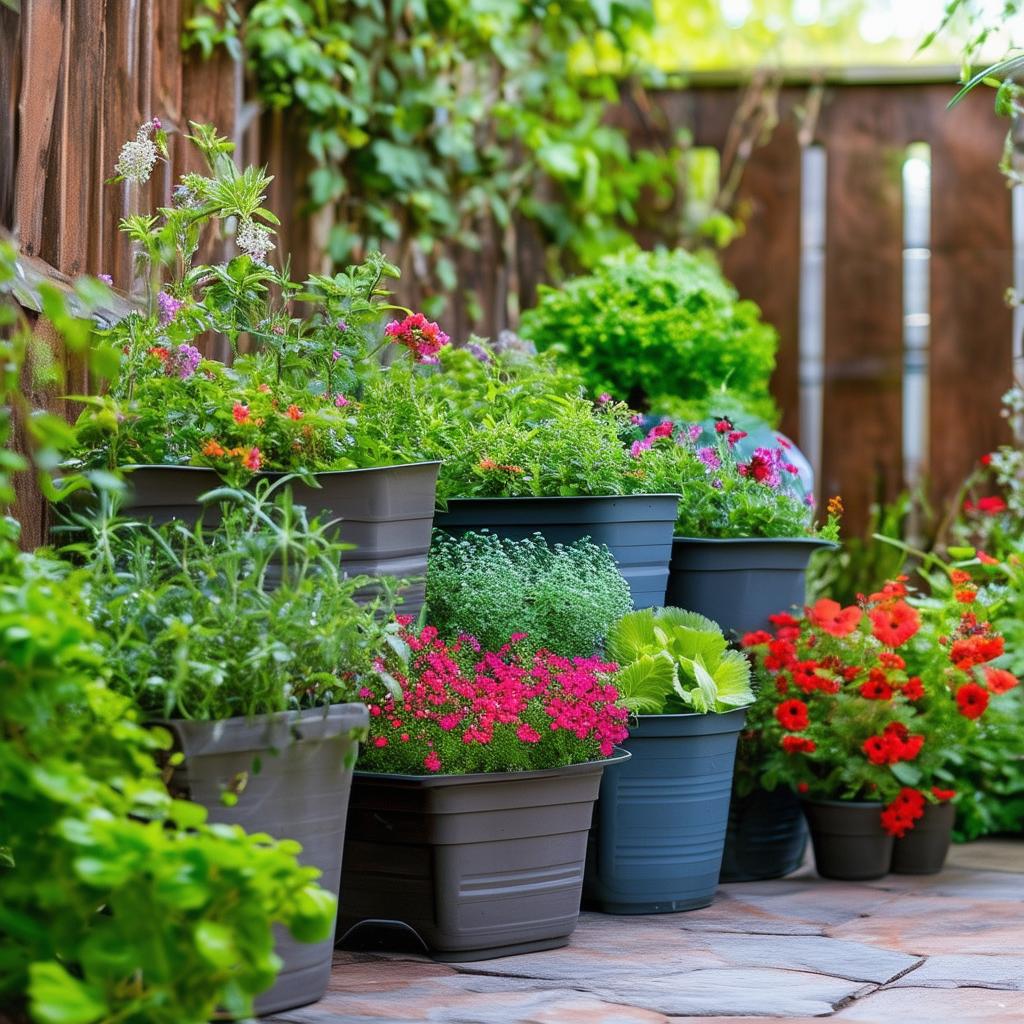
Container gardening offers a flexible approach for maximizing your small backyard space. By using a variety of containers, you can transform even the most limited areas into vibrant gardens. Consider using vertical gardens with stacked planter boxes or wall-mounted pots to make use of vertical space without occupying too much ground area. This style not only maximizes space but also adds layers and depth to your garden design. Additionally, you can mix and match container types—from ceramic pots to recycled materials—creating an eclectic aesthetic that reflects your personal style.
Another advantage of container gardening is the ease with which you can rearrange your layout. Changing the positioning of plants based on sunlight exposure or seasonality allows for an adaptable gardening strategy. For optimal plant health and design flow, here are some essential tips to consider:
- Group plants by water needs to simplify maintenance.
- Use tall containers at the back or center of your layout for visual balance.
- Combine flowers and herbs in the same containers for a multi-functional approach.
- Consider mobility—use wheeled containers that can be easily moved for sunlight and aesthetic purposes.
To further illustrate different layout options, refer to the table below for a quick guide on plant compatibility:
| Container Type | Best Pairings | Benefits |
|---|---|---|
| Herb Pot | Basil, Chives, Parsley | Convenient access for cooking |
| Flower Box | Petunias, Marigolds | Attracts pollinators |
| Vegetable Planter | Tomatoes, Peppers | Fresh produce within reach |
Creating Cozy Seating Areas in Small Backyards
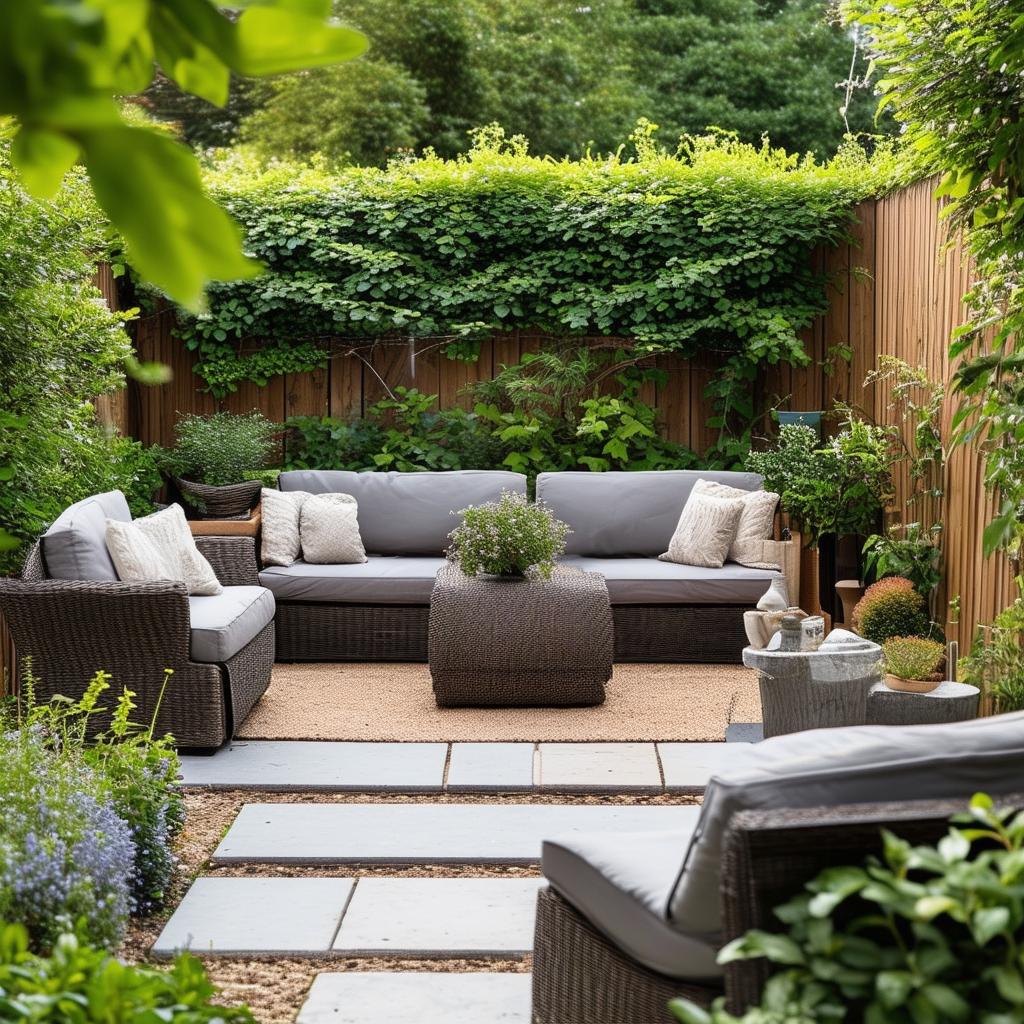
Transform your small backyard into a refuge by incorporating snug seating arrangements that invite relaxation and conversation. To achieve this, consider using compact furniture that can be easily maneuvered and stored. Options like bistro tables, foldable chairs, and lovely poufs can add charm without overwhelming the space. Create a sense of enclosure and warmth by using planters and decorative screens to define your seating area while adding a touch of greenery. Opt for soft, weather-resistant cushions in light colors to keep the atmosphere inviting and open, fostering a sense of tranquility.
Another effective approach is to maximize vertical space, which allows for additional seating without sacrificing ground area. You might opt for a built-in bench with storage under the seat or install hanging chairs that add an interesting visual element while providing extra seating. Consider utilizing spaces like corners or walls by attaching shelves for plants or swing seats, giving your cozy nook a unique flair. Additionally, soft lighting—such as string lights or lanterns—can enhance the ambiance, making it an ideal place for evening gatherings.
The Power of Pathways: Guiding the Eye in Limited Spaces
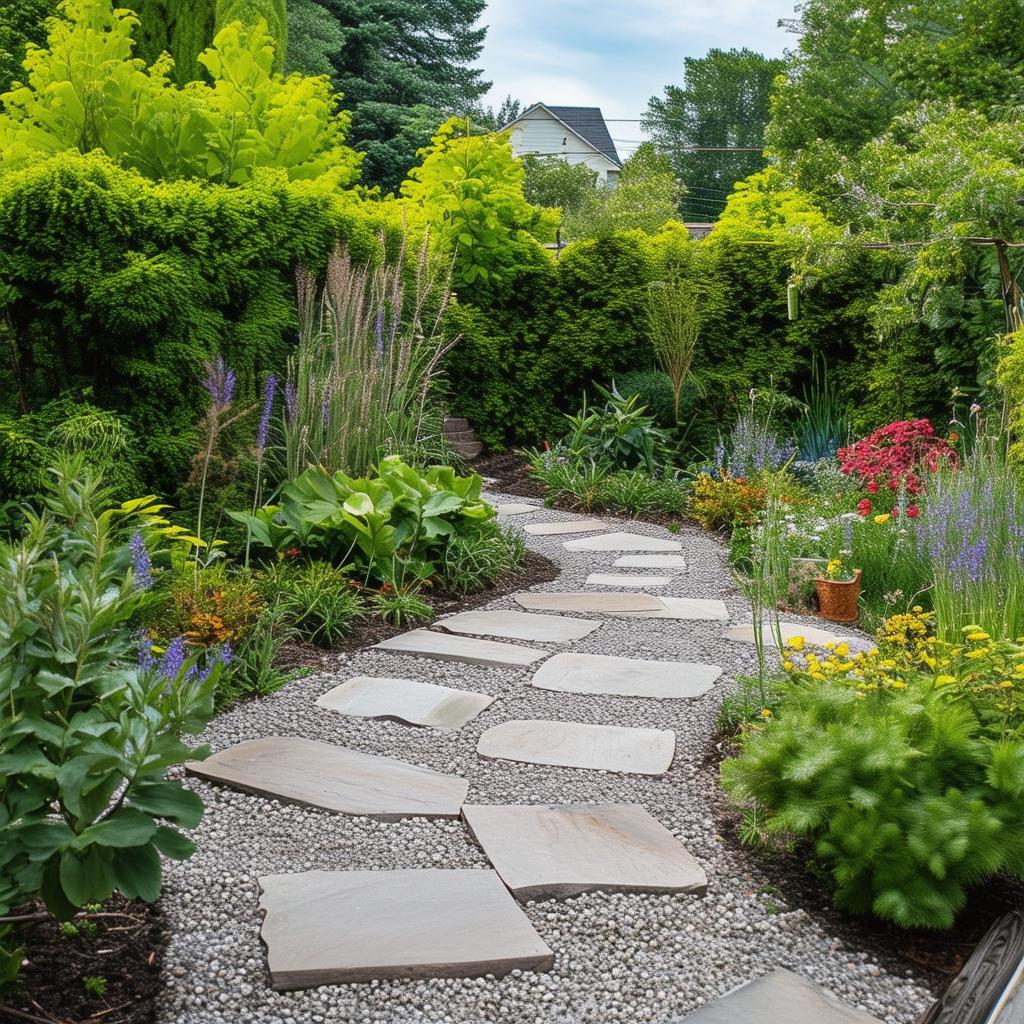
Creating a compelling layout in a small backyard garden is all about establishing pathways that guide the eye and enhance the overall experience. These pathways serve a dual purpose: they facilitate navigation while also framing the visual composition of your garden. When designing these routes, consider using materials that complement your garden’s theme, such as stone, gravel, or wood chips. This not only helps in defining the pathways but also brings texture and interest to the space. Integrate elements that draw attention, such as strategically placed planters or decorative stones, which can further enhance the appeal of the area and provide a focal point that invites exploration.
In addition to physical pathways, you can employ visual pathways that lead the eye seamlessly from one section to another. Utilize height variations by incorporating raised beds or vertical gardens. This layered approach adds depth and encourages the observer’s gaze to wander through the garden, creating a more immersive environment. Consider adding features such as small water fountains or benches along the way to offer resting spots that encourage visitors to linger, providing moments of tranquility amidst the vibrant plant life. By implementing these thoughtful designs, you transform limited space into a sanctuary that is both functional and aesthetically pleasing.
Water Features: Adding Serenity to Small Backyards
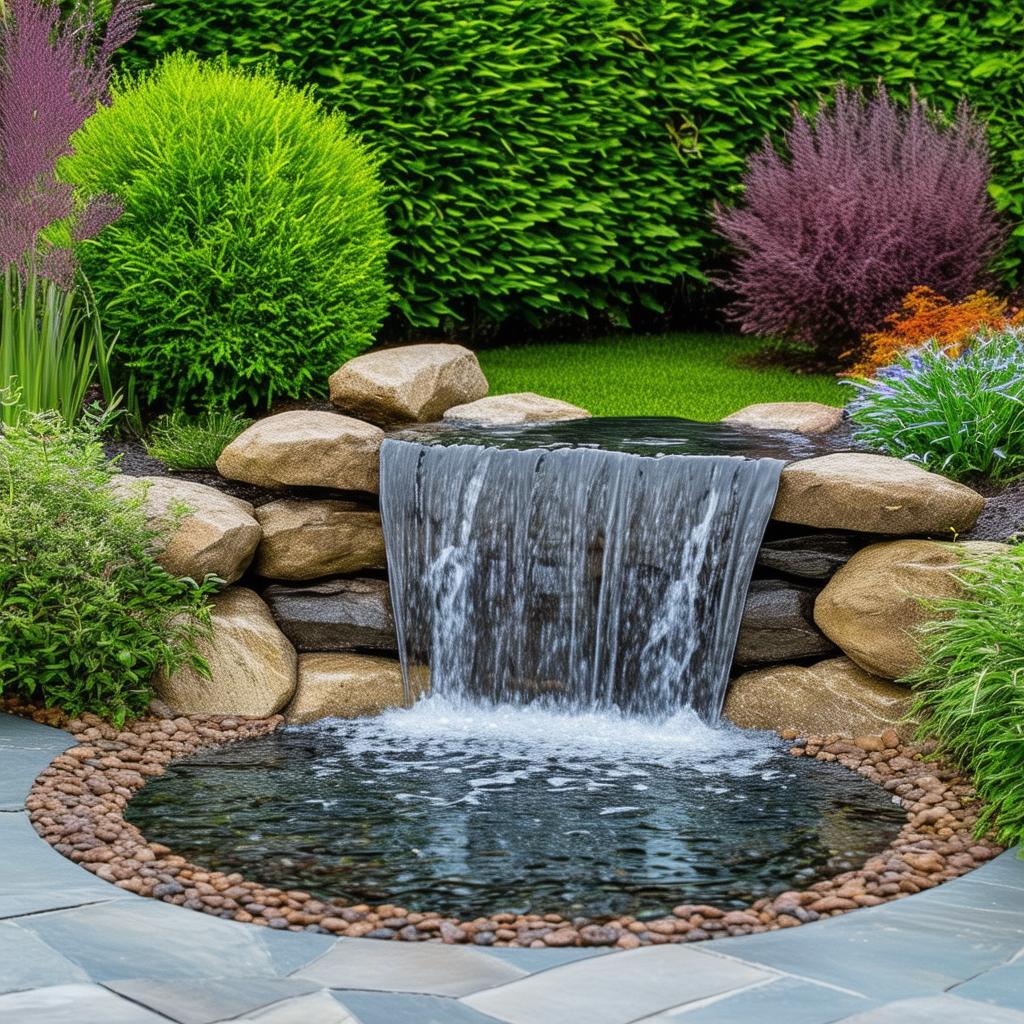
Incorporating water features into compact outdoor spaces can transform your small backyard into a tranquil oasis. The gentle sound of flowing water creates an atmosphere of peace, allowing you to escape from the chaos of everyday life. When selecting a water feature, consider options that maximize space while providing visual appeal. Mini fountains, ponds, and water walls are excellent choices that can easily fit into tight corners or serve as focal points. Here are a few ideas to inspire you:
- Tabletop Fountains: Perfect for patios, they add a calming ambiance without taking up much room.
- Wall-Mounted Aquatic Features: These bring vertical beauty and save valuable ground space.
- Small Reflecting Ponds: They can be designed with natural stones and aquatic plants for an inviting appearance.
When planning your water feature, it’s also crucial to consider its maintenance needs and how it aligns with the overall design of your garden. A harmonious blend of plants and hardscape can enhance the presence of the water element, making it feel like an integral part of your backyard. For example, pairing your fountain with lush ferns or colorful container plants can create a striking visual effect. Implementing a simple irrigation system can also ensure that any nearby flora remains vibrant without added effort.
| Water Feature | Space Requirement | Maintenance Level |
|---|---|---|
| Tabletop Fountain | Small | Low |
| Wall-Mounted Feature | Minimal | Medium |
| Reflecting Pond | Medium | High |
Using Color Wisely to Expand Visual Space

Using color effectively can trick the eye and create an illusion of expanded space in your small backyard garden. Light colors, such as soft pastels or whites, can reflect sunlight and make the area appear more open and airy. Conversely, dark colors absorb light, making spaces feel cozier but potentially more constricted. To maximize visual space, consider implementing a palette where cool colors like blues and greens dominate; these hues naturally recede in the background, enhancing the depth of your garden. Incorporating colorful focal points, such as vibrant flowers or eye-catching pots in strategic locations, can draw the gaze outward, giving the impression of a larger area.
To effectively arrange your color scheme, think about creating zones within your garden using a cohesive palette. Consider these color strategies to expand visual dimensions:
- Layering Tones: Use different shades of the same color to create depth.
- Contrasting Accents: Integrate pops of bright colors amidst softer surroundings.
- Consistent Borders: Employ a uniform color for fences or pathways to unify the space.
Additionally, utilizing a color wheel can help you identify complementary colors that enhance visual interest while ensuring that your garden feels cohesive. Here’s a simple reference table to consider when selecting your garden colors:
| Color | Effect on Space |
|---|---|
| Light Blue | Expands visual height and depth |
| Soft Green | Creates a serene, open feel |
| Vibrant Yellow | Adds warmth and draws attention |
| Deep Purple | Creates a cozy, intimate atmosphere |
Innovative Fencing Solutions for Privacy and Style

When designing small backyard gardens, incorporating unique fencing can greatly enhance both privacy and aesthetic appeal. Think beyond traditional wooden panels and explore materials that fuse functionality with style. Vertical gardens can serve as an attractive barrier while also allowing for greenery to flourish. Alternatively, trellis fencing adorned with climbing plants adds a touch of nature while defining your space. These solutions not only enhance the ambiance of your garden but also maximize the vertical elements of your layout, allowing you to make the most of limited space.Another innovative approach involves using bamboo screens, which provide a modern twist while maintaining a natural look. Their versatility in height and density allows for customized privacy levels without overwhelming compact landscapes. Additionally, consider slatted or louvered designs, which can offer a contemporary flair and allow for airflow while still providing seclusion. Below is a simple visual representation of these fencing options:
| Fencing Type | Features | Benefits |
|---|---|---|
| Vertical Garden | Greenery integration | Beauty + Growth |
| Trellis Fencing | Climbing plants | Defined space + Appeal |
| Bamboo Screens | Natural aesthetic | Modern style + Privacy |
| Slatted Designs | Airflow + Light | Seclusion + Illumination |
The Role of Lighting in Enhancing Small Backyard Spaces

Understanding the importance of lighting can transform even the smallest outdoor space into a visually stunning retreat. By strategically placing various light sources, you can create different atmospheres and highlight specific features in your garden. Consider incorporating soft, ambient lighting to encourage relaxation, or using focused spotlights to draw attention to beautiful plants or architectural elements. Light fixtures such as lanterns, string lights, or embedded pathway lights can add dimension and warmth, making the yard feel both cozy and expansive. Choose warm-toned lights to enhance the natural beauty of your garden while providing an inviting ambiance.
In addition to aesthetics, effective lighting can also improve the functionality of your backyard area. Illuminating pathways and seating spaces not only aids in navigation but also fosters an inviting environment for gatherings and celebrations. Opt for energy-efficient LED lights to keep the maintenance low and the sustainability high. Below is a simple guide to various types of lighting and their ideal uses:
| Lighting Type | Best Use |
|---|---|
| String Lights | Decorative, overhead ambiance in seating areas |
| Garden Spotlights | Highlighting focal points like sculptures or flower beds |
| Pathway Lights | Safe navigation along walkways |
| Lanterns | Creating cozy corners or illuminating dining areas |
Garden Zones: Defining Areas for Different Activities
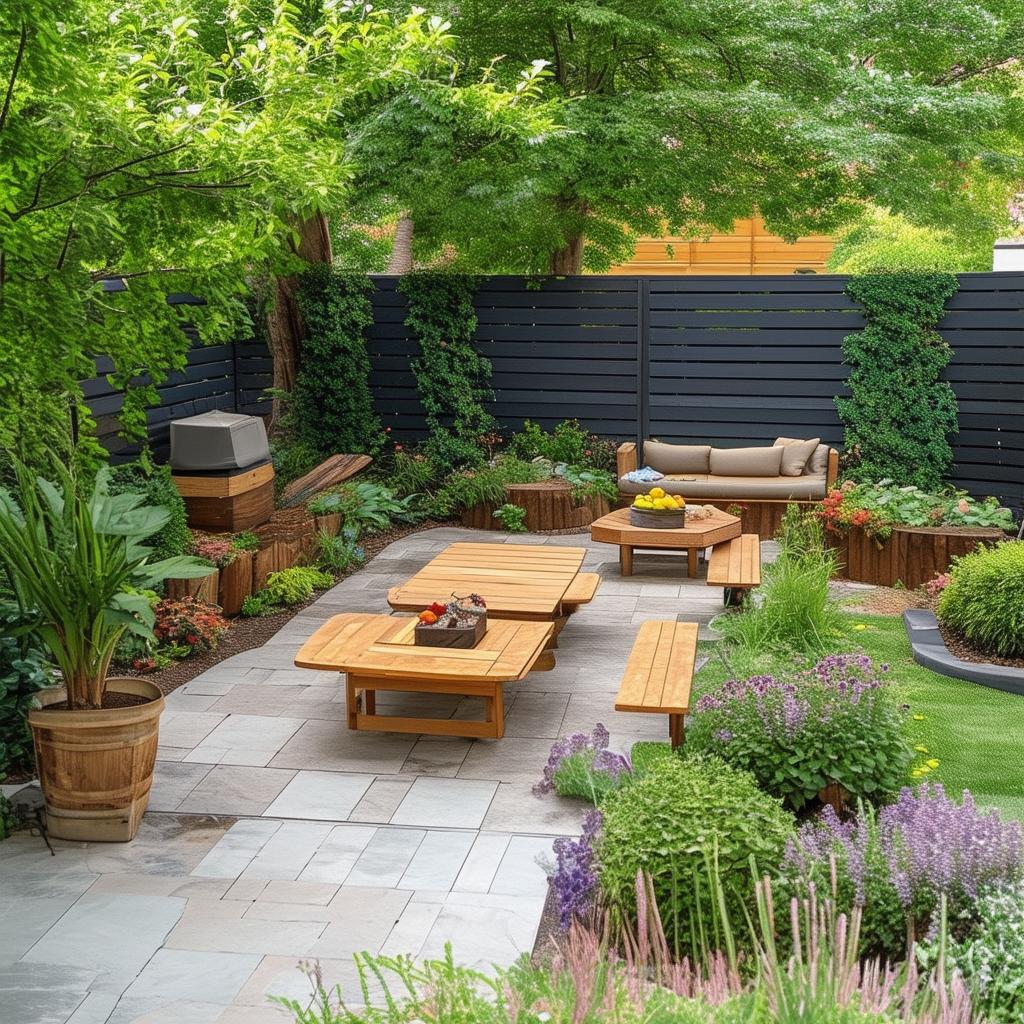
Transforming your small backyard into a multipurpose oasis involves understanding how to effectively designate zones for various activities. By segmenting your garden space, you can ensure each area serves a unique function, be it relaxation, play, or cultivation. For instance, consider establishing a cozy reading nook surrounded by lush plants, while a compact vegetable patch might thrive in another corner, maximizing productivity without crowding. Utilize vertical gardening techniques to maintain an open space, allowing room for a small seating area that serves as a gathering point for family and friends.
When planning these zones, think about pathways and accessibility. Incorporating defined borders between different sections can create a sense of flow while also providing functional space for movement. Here’s an example of how to create distinct areas that keep your garden organized and appealing:
| Zone | Purpose |
|---|---|
| Relaxation Zone | Quiet reading and enjoying nature |
| Vegetable Garden | Growing fresh produce |
| Play Area | Space for kids to play |
| Entertaining Space | Gathering for outdoor dining |
By crafting distinct zones, you not only enhance the functionality of your small backyard but also create a visually appealing landscape that invites interaction. Whether you opt for raised beds to delineate growing areas or utilize decorative stones to frame your relaxation zone, the possibilities are endless. With a thoughtful layout, your limited space can become a harmonious blend of activities that cater to your lifestyle needs.
Innovative Use of Garden Structures in a Small Backyard
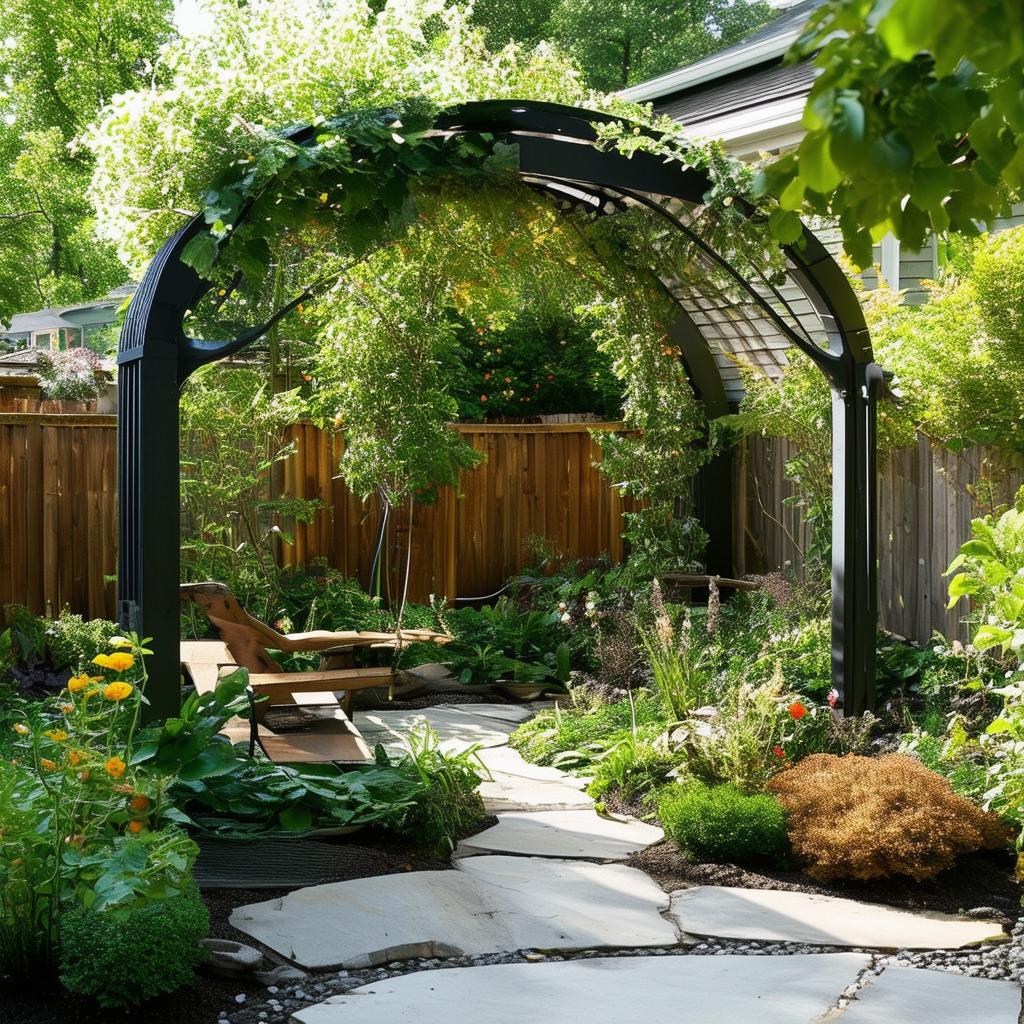
Transforming a small backyard into a lush retreat can be achieved with the strategic integration of garden structures. Incorporating vertically-oriented elements like trellises and arbors not only saves ground space but also adds depth to a small area. These structures can serve as a framework for climbing plants, creating an inviting vertical garden that draws the eye upward and creates a sense of privacy. Consider using folding screens or lattice panels to delineate different areas in your yard, allowing for a more organized layout that maximizes usable space while providing aesthetic interest.
Moreover, the use of multi-functional furniture is a clever way to make the most out of your limited square footage. Items such as benches with built-in storage or planter boxes that double as seating can enhance the utility of your garden space. Garden structures like raised planters or pergolas can also create distinct zones without overwhelming the visuals. Here’s a quick comparison of popular garden structures and their benefits:
| Garden Structure | Benefits |
|---|---|
| Trellis | Supports climbing plants, utilizes vertical space |
| Arbor | Creates an entrance, offers shade |
| Raised Planters | Improves drainage, enhances accessibility |
| Pergola | Defines outdoor space, provides partial shade |
Seasonal Planting for Year-Round Interest

To create a garden that dazzles throughout all four seasons, consider selecting plants that showcase varied blooms, foliage, and textures. A harmonious combination of annuals, perennials, and evergreens can bring vibrancy and interest no matter the time of year. Begin by incorporating some spring favorites such as tulips and daffodils, which offer a burst of color after winter. As the season transitions, introduce summer staples like lavender and coneflower, establishing a lively sensory experience with their fragrance and colors. In the fall, chrysanthemums and ornamental grasses provide warmth and depth, while winter can be brightened up with carefully chosen evergreen shrubs and trees that can stand strong against the chill.
Another effective approach to year-round interest is layering and grouping plants by height and bloom time. Combining plants in staggered heights not only maximizes vertical space but also creates a more engaging visual experience. Aim for a mix of ground cover, mid-height blooms, and tall stakes to draw the eye across the landscape. For a practical overview, consider the following seasonal blooming table that aligns with your planting schedule:
| Season | Plants to Consider |
|---|---|
| Spring | Daffodils, Hyacinths, Tulips |
| Summer | Lavender, Coneflower, Salvia |
| Fall | Chrysanthemums, Asters, Ornamental Grasses |
| Winter | Pine, Spruce, Holly |
By applying these concepts, you can create a small backyard garden that is not only functional but also a masterpiece of color and texture, providing joy throughout the year. Each plant plays a role in the seasonal shaping of the garden, ensuring that there is always something unique to enjoy, whether it’s a fragrant bloom or the rustling of evergreen leaves against the winter wind.
Creative Mulching Techniques for Small Backyards
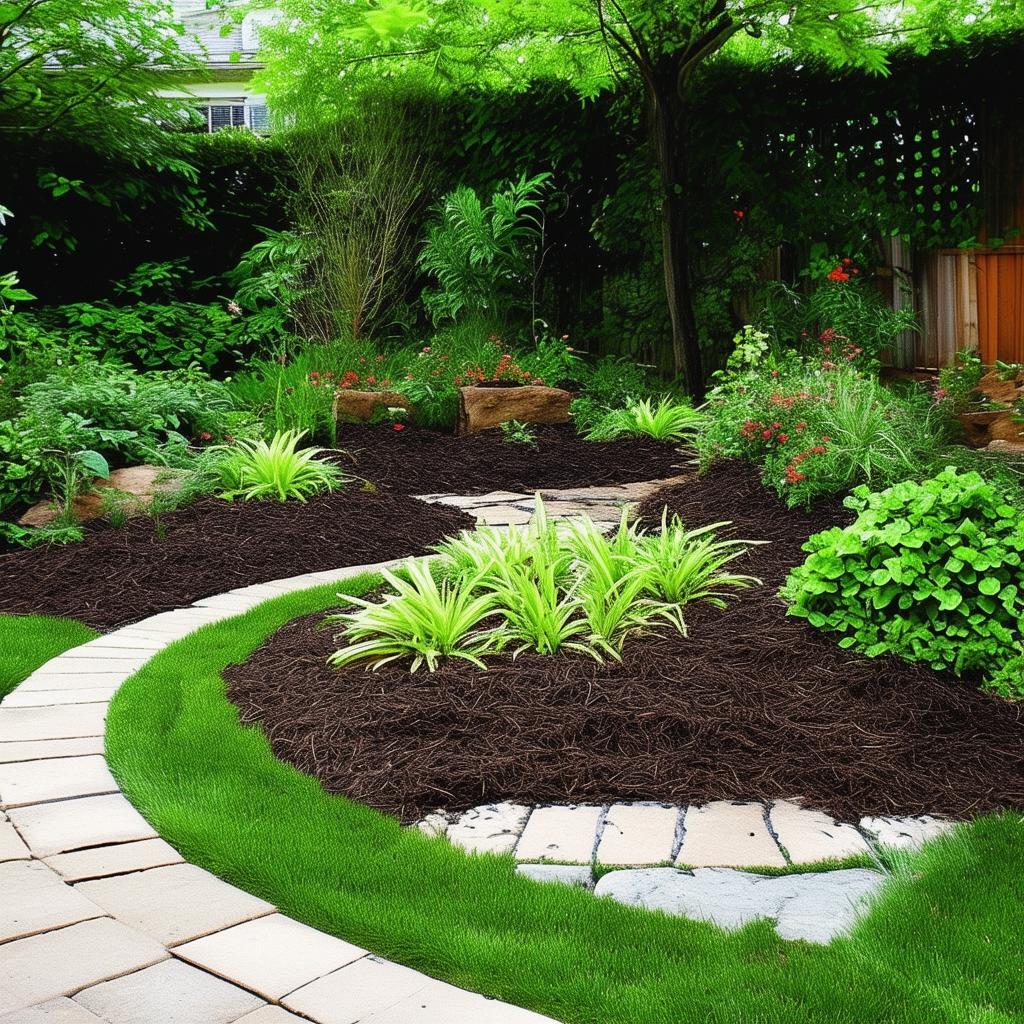
Utilizing mulch effectively can transform small backyard spaces, adding both aesthetic appeal and practical benefits. Consider implementing layered mulching, where you can combine different mulch materials for both functionality and visual interest. For instance, using wood chips at the base complemented by a layer of colored pebbles on top not only suppresses weeds but also creates a striking contrast. Another innovative method is living mulch, where ground cover plants like Creeping Thyme or Clover are planted alongside your main garden crops. These plants help retain moisture and nutrients in the soil while providing a lush, green carpet that elevates the garden’s beauty.
Incorporating local and organic materials can further enhance your mulching strategy. Here are some creative options:
- Grass clippings: Perfect for nitrogen-rich mulch, they decompose quickly and nourish the soil.
- Leaf mold: Composed of decomposed leaves, it enhances soil structure and moisture retention.
- Straw or hay: Great for vegetable gardens, they insulate the soil and provide a rustic look.
For small spaces, consider a DIY mulch bin to store these natural materials efficiently. This not only saves costs but also promotes sustainability in your gardening practice.
Outdoor Decor: Adding Personality to Small Spaces
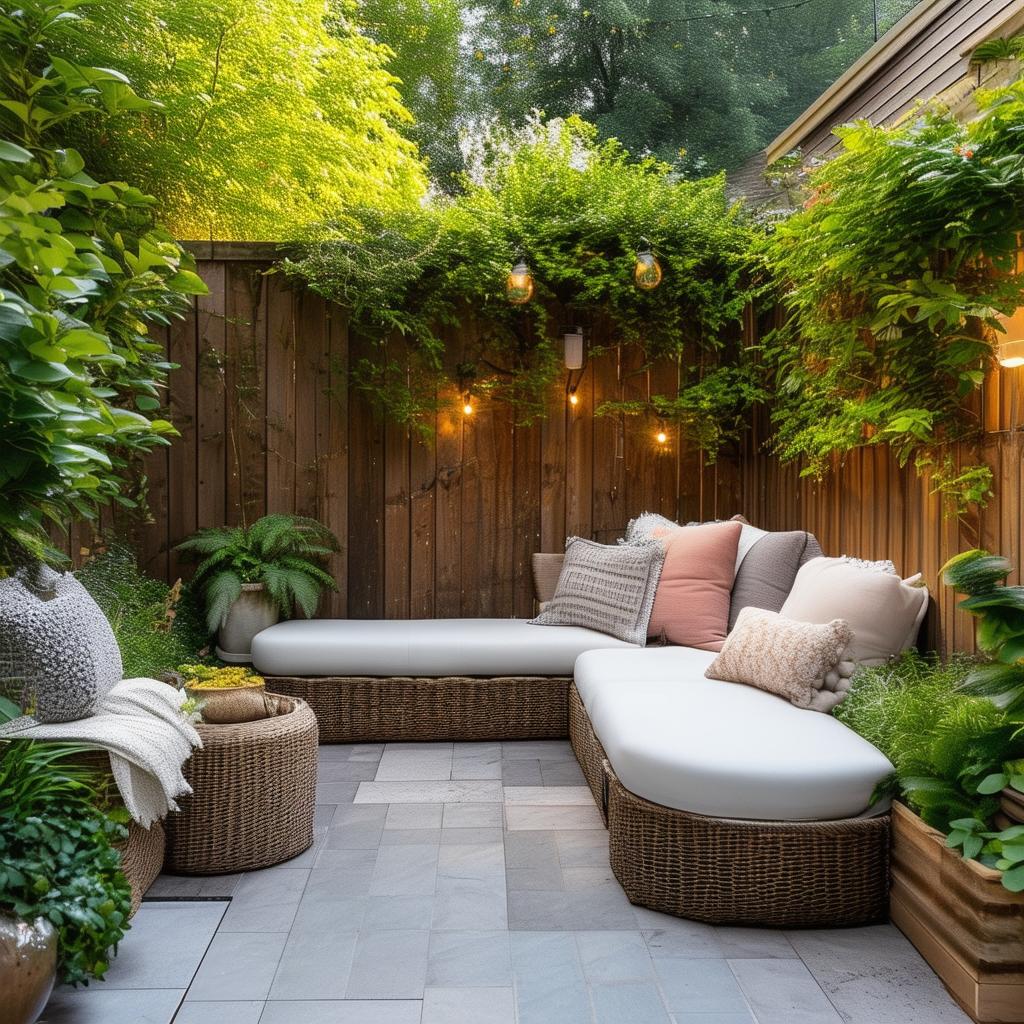
Transforming small outdoor spaces into cozy retreats can be a delightful challenge. One effective way to infuse personality is by incorporating unique decorative elements that reflect your style while maximizing space. Consider adding a variety of planters made from different materials like terracotta, metal, or even reclaimed wood. These not only bring color and vibrancy but also can be stacked or arranged in creative ways to save room. Layering textures with items like string lights, outdoor rugs, or themed cushions can elevate the ambiance, making the area feel inviting without overwhelming the senses.
In the quest for creating an engaging outdoor haven, think about integrating multifunctional furniture and decor. For example, opt for benches with storage or foldable tables that can be tucked away when not in use. Accentuate the space with wall-mounted shelves to hold plants or decorative items, thus drawing the eye upward and creating a sense of depth. Don’t forget the power of color; utilizing a vibrant paint scheme on fences or garden furniture can transform the overall vibe. Here’s a quick overview of some creative decorative options to consider:
| Type of Decor | Purpose |
|---|---|
| Hanging Planters | Add greenery without taking up ground space. |
| Fairy Lights | Create a magical evening atmosphere. |
| Foldable Chairs | Provide seating that can be easily stored. |
| Vertical Gardens | Optimize growing space and add visual interest. |
Using Mirrors to Create the Illusion of Space
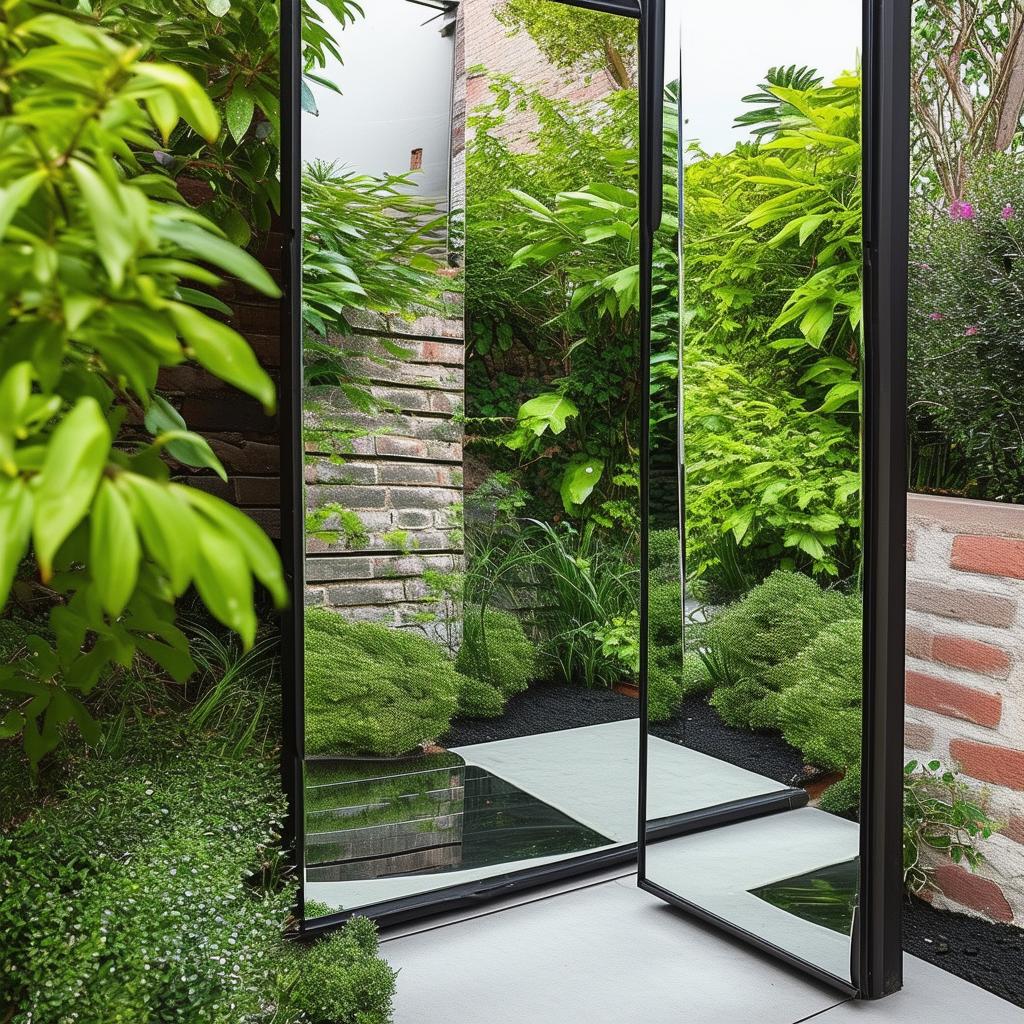
Incorporating mirrors into your small backyard garden can significantly enhance the perception of space. These reflective surfaces can create a sense of depth and openness, making your garden feel larger than it actually is. Strategically placing mirrors against walls or fences, or even embedding them among your plants, can beautifully bounce light around the area, adding vibrancy and warmth. Here are some creative ideas for using mirrors:
- Large wall mirrors: Installing a sizable mirror on a wall can give the illusion of an expansive garden view, reflecting your green landscape.
- Mirror planters: Use mirrored surfaces on the sides of planter boxes to multiply the visual impact of your plants.
- Hanging mirrors: Suspend small, decorative mirrors from tree branches or garden hooks to create a playful atmosphere.
- Fragmented mirrors: Utilize multiple small mirrors in varying shapes to add artistic appeal while expanding the visual space.
When choosing mirrors, consider both size and style to ensure they complement your garden’s overall aesthetic. Be mindful of their orientation; positioning mirrors to reflect desirable views, such as blooming flowers or beautiful garden furniture, can create a captivating focal point. To give you some inspiration, here’s a quick comparison of mirror styles:
| Mirror Style | Visual Effect | Best Use |
|---|---|---|
| Large Wall Mirror | Expansive feel | Against a solid fence |
| Round Mirrors | Softened edges | Garden paths |
| Mirrored Planters | Enhanced greenery | Grouped plants |
| Small Decorative Mirrors | Whimsy and charm | Clustered displays |
Maximizing Sunlight Exposure: Positioning Your Plants
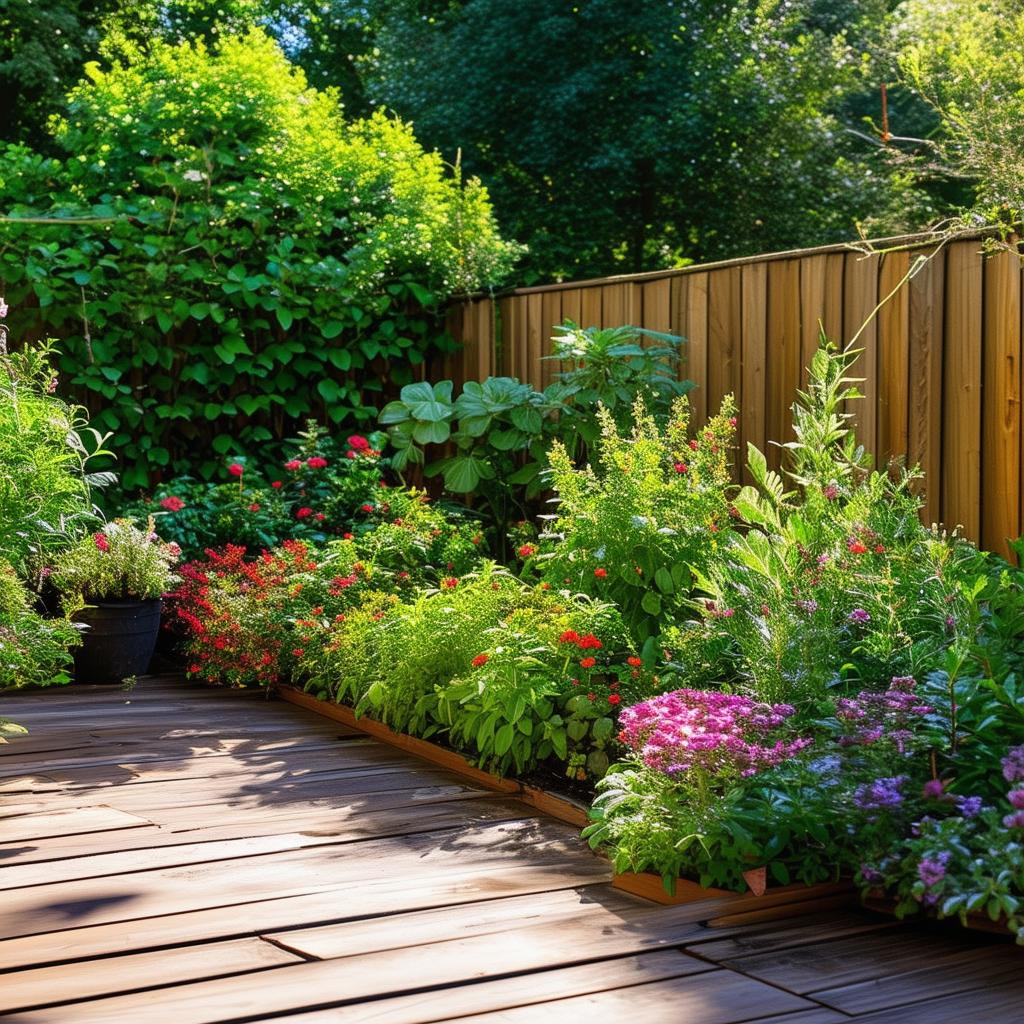
When designing a small backyard garden, understanding how sunlight interacts with your space is crucial for plant health. Start by observing the sun’s path across your yard throughout the day. This will help you identify which areas receive the most intense light and which might be shaded. Position taller plants or structures like trellises or fences to the north of your garden beds, allowing shorter plants to bask in the full sunlight. Grouping plants with similar light needs ensures that each one thrives, creating a harmonious and lush environment without unnecessary competition for light.
Utilize a thoughtful arrangement to make the most of your limited space. Consider these strategies for optimal plant positioning:
- Plant sun-loving species such as tomatoes and peppers in the sunniest spots.
- Place leafy greens and herbs that prefer a bit of shade closer to taller plants or structures.
- Incorporate movable containers that can shift locations to chase the sun as the season changes.
Experiment with different layouts and observe how the light shifts over time, adapting your plant placement to maximize sunlight exposure and promote a thriving garden.
How to Maintain a Small Backyard Garden with Minimal Effort

Maintaining a small backyard garden can be rewarding without being overwhelming. By focusing on low-maintenance plants and adopting simple techniques, you can enjoy the beauty of your garden with minimal effort. Consider these tips for a thriving garden:
- Choose drought-resistant and native plants that thrive in your climate, reducing the need for frequent watering.
- Incorporate perennial plants that return year after year, minimizing the need for replanting.
- Utilize container gardening for flexibility and ease of mobility, allowing you to change the layout effortlessly.
Implementing efficient garden layouts can significantly cut down on maintenance tasks. For instance, using vertical space by installing wall planters or trellises not only maximizes space but also promotes air circulation and sunlight exposure. Another practical approach is to create a succession planting schedule, ensuring that you have a variety of plants blooming throughout the seasons while minimizing gaps in planting. A quick reference table can help identify the right plants for your garden layout:
| Plant Type | Maintenance Level | Best For |
|---|---|---|
| Herbs (e.g., rosemary, thyme) | Low | Containers, borders |
| Perennials (e.g., daylilies, asters) | Low | Flower beds |
| Drought-tolerant plants (e.g., sedums) | Minimal | Rock gardens, borders |
Sustainable Practices for Small Backyard Gardens
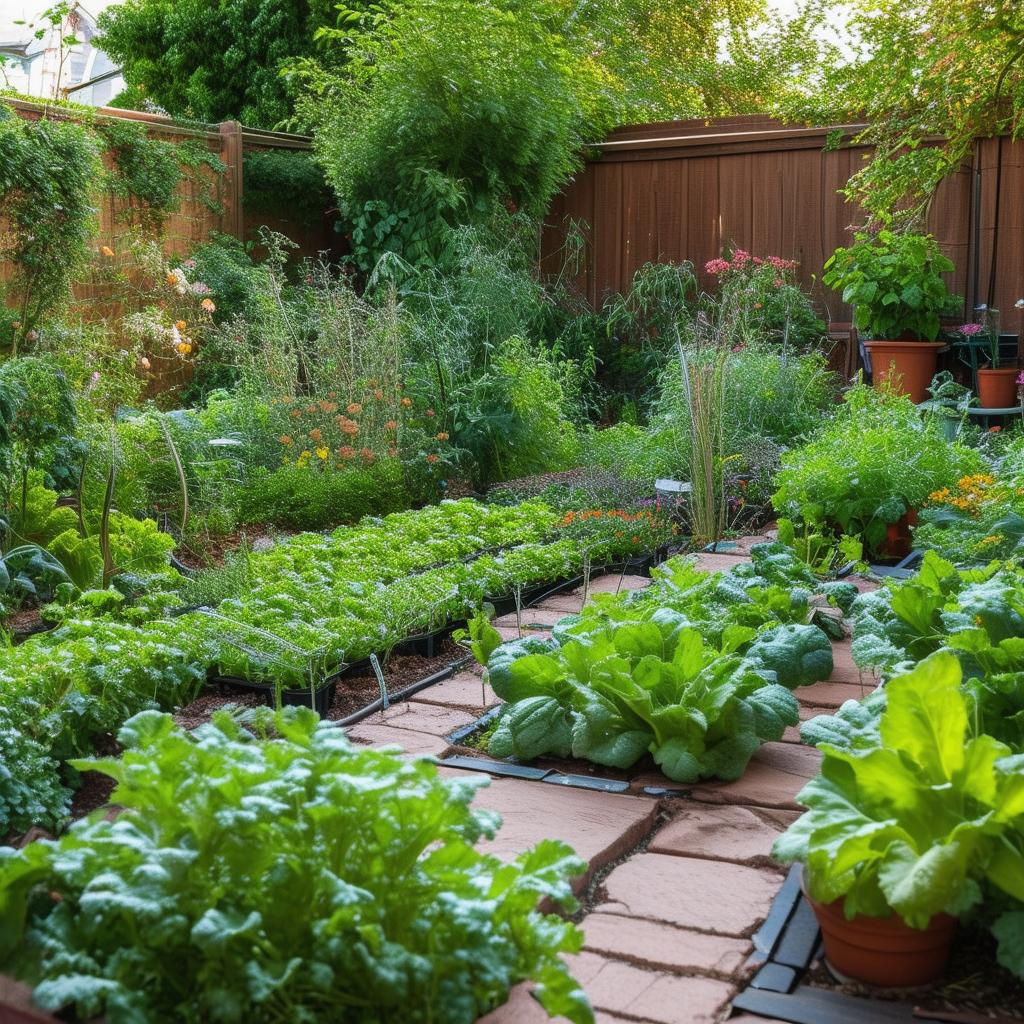
Creating a sustainable backyard garden not only enhances your outdoor space but also contributes to a healthier planet. One effective approach is to opt for native plants, as they require less water and maintenance while providing essential habitats for local wildlife. Incorporating companion planting can also be beneficial; for example, pairing tomatoes with basil can deter pests and improve growth. Consider using vertical garden structures made of recycled materials, such as wooden pallets or old crates, which save ground space while adding vertical interest to your garden.Implementing a rainwater collection system can significantly reduce water waste. Rain barrels or drip irrigation systems are excellent ways to ensure your plants receive adequate moisture without excessive use of municipal water. Additionally, maintaining healthy soil through composting and using organic fertilizers will support plant health and reduce the need for chemical inputs. consider creating a small pollinator-friendly zone with flowering herbs and plants to attract bees and butterflies, essential for a thriving garden ecosystem.
Balance Between Hardscaping and Softscaping

Creating a visually captivating garden requires a fine elements. Hardscaping, such as patios, walkways, and retaining walls, provides structure and functionality, while softscaping, including plants, flowers, and shrubs, introduces color and warmth. When designing your small backyard garden, consider using a combination of these elements to maximize your space. By incorporating features like a compact stone pathway or a layered gravel area surrounded by vibrant flora, you can create zones that not only enhance usability but also invite exploration.
To achieve harmony between the two, focus on proportionality and flow. Opt for smaller hardscaping elements that won’t overwhelm the garden but rather accentuate the natural beauty of the plants. For instance, a simple wooden border around raised flower beds can delineate spaces clearly while remaining unobtrusive. When planning, think about including features like:
- Seating areas: Benches or small bistro tables can create a cozy corner for relaxation.
- Vertical gardens: Utilizing wall space with climbing plants can save ground area while adding lush greenery.
- Decorative stones: Integrating colorful pebbles can add visual interest without occupying too much space.
Below is a concise comparison of hardscaping and softscaping materials that can work beautifully in a small backyard:
| Material Type | Examples | Benefits |
|---|---|---|
| Hardscaping | Bricks, Natural Stone, Concrete | Durability, Structure, Low Maintenance |
| Softscaping | Shrubs, Perennials, Grasses | Color, Texture, Seasonal Change |
Q&A
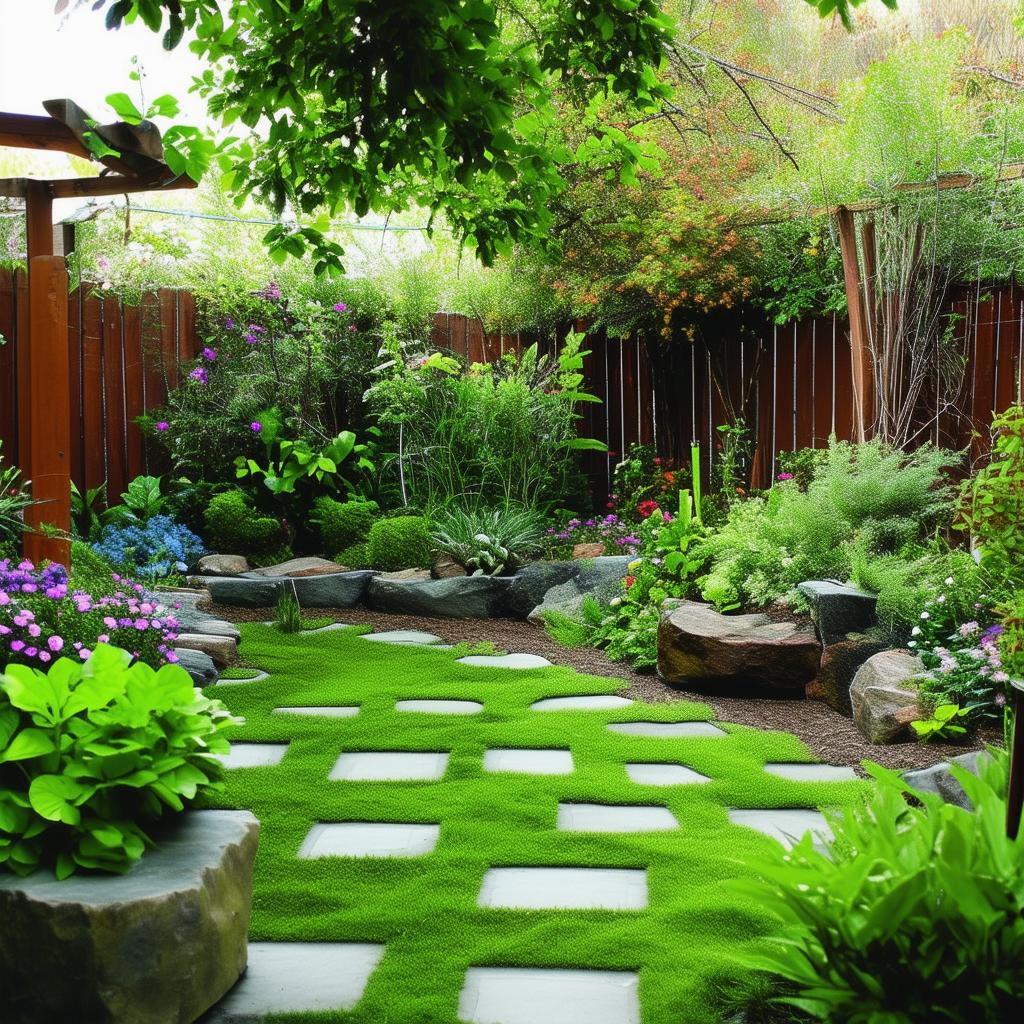
Q1: What are some key factors to consider when designing a layout for a small backyard garden?
A1: When designing a small backyard garden, it’s vital to consider the garden’s orientation, sunlight patterns, and existing structures. Take note of how water drains through the space and which areas receive the most sun throughout the day. Additionally, think about how you want to use the space—whether for relaxation, dining, or growing plants. A well-defined purpose will help shape your layout decisions.
Q2: How can vertical gardening techniques help maximize limited space?
A2: Vertical gardening is an excellent way to utilize vertical space for plants without occupying valuable ground area. Installing vertical planters, trellises, or wall-mounted pots can help you grow herbs, flowers, and even climbing vegetables like peas and tomatoes. This not only saves ground space but also creates an eye-catching focal point and adds dimension to your garden.
Q3: What are some creative ways to incorporate seating in a small garden?
A3: In a small garden, seating can be creatively integrated with multifunctional furniture. Consider bench seating around the perimeter of the garden or using garden stools that can double as planters. Folding chairs and tables can be stored away when not in use to maximize space during larger gatherings. Another idea is to create a cozy nook using built-in benches with storage for cushions and gardening tools.
Q4: Can you suggest some plant choices that are ideal for small gardens?
A4: Absolutely! For small gardens, opt for plants that are compact and have a high visual impact. Herbs like basil and rosemary are both functional and attractive. Consider dwarf varieties of shrubs and flowers, such as miniature roses and compact hydrangeas. Additionally, think about growing perennials that come back year after year, which can provide continued color without requiring extensive space replanting.
Q5: How can colors and textures enhance the feeling of spaciousness in a small garden?
A5: Using a cohesive color palette can create a sense of harmony and space. Lighter colors tend to make an area feel larger and more open, while varied textures add visual interest without overwhelming the senses. Incorporating a mix of foliage and blooms can also play with depth, creating layers that draw the eye and give the illusion of more space.
Q6: What are some common mistakes to avoid when planning a small garden layout?
A6: One common mistake is overcrowding plants, which not only obstructs growth but also diminishes visual appeal. Another pitfall is neglecting pathways; they are essential for accessibility and can help define different areas within the garden. failing to plan for seasonal changes can lead to a sparse garden in off-peak times; be sure to include plants that provide year-round interest.
Q7: How can I encourage wildlife into my small garden without compromising space?
A7: Encouraging wildlife in a small garden is possible through strategic planting. Incorporate native plants that attract beneficial insects and pollinators. Small bird feeders or baths can also be space-efficient ways to invite feathered friends. Even a tiny patch of wildflowers can create a habitat for local wildlife without overwhelming your layout.
Q8: What are some budget-friendly tips for creating a small garden layout?
A8: To keep costs down, consider DIY projects like repurposing old furniture into planters or building your own raised garden beds. Mason jars, wooden crates, and pallets can be transformed into charming plant holders. Additionally, start with seeds instead of adult plants to save money; many plants can be grown easily from seed and will flourish in your cozy garden space.

In Summary
As we close the chapter on maximizing space in your small backyard garden, remember that creativity knows no bounds. Each square foot holds potential waiting to unfold. By experimenting with vertical gardens, container arrangements, and multifunctional elements, you not only enhance the beauty of your space but also cultivate a serene retreat that reflects your personality.
Embrace the challenge of limited space as an opportunity to innovate. Whether it’s a cozy nook for contemplation, an edible paradise, or a vibrant haven for wildlife, the possibilities are endless. So grab your gardening gloves, sketch a vision, and embark on the journey of transforming your small backyard into a flourishing sanctuary. Your dream garden is just a layout away, waiting to blossom under your care. Happy gardening!
